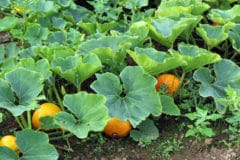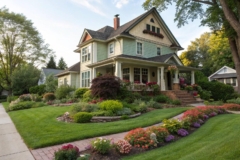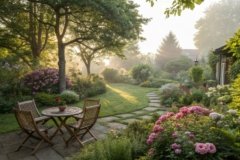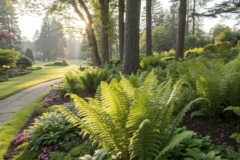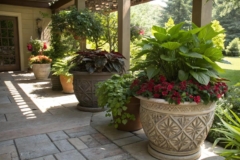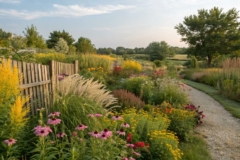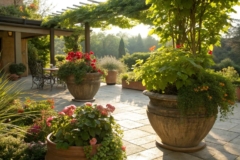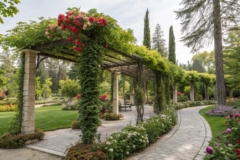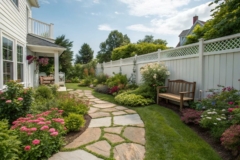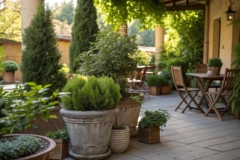1. Hostas for Lush Foliage
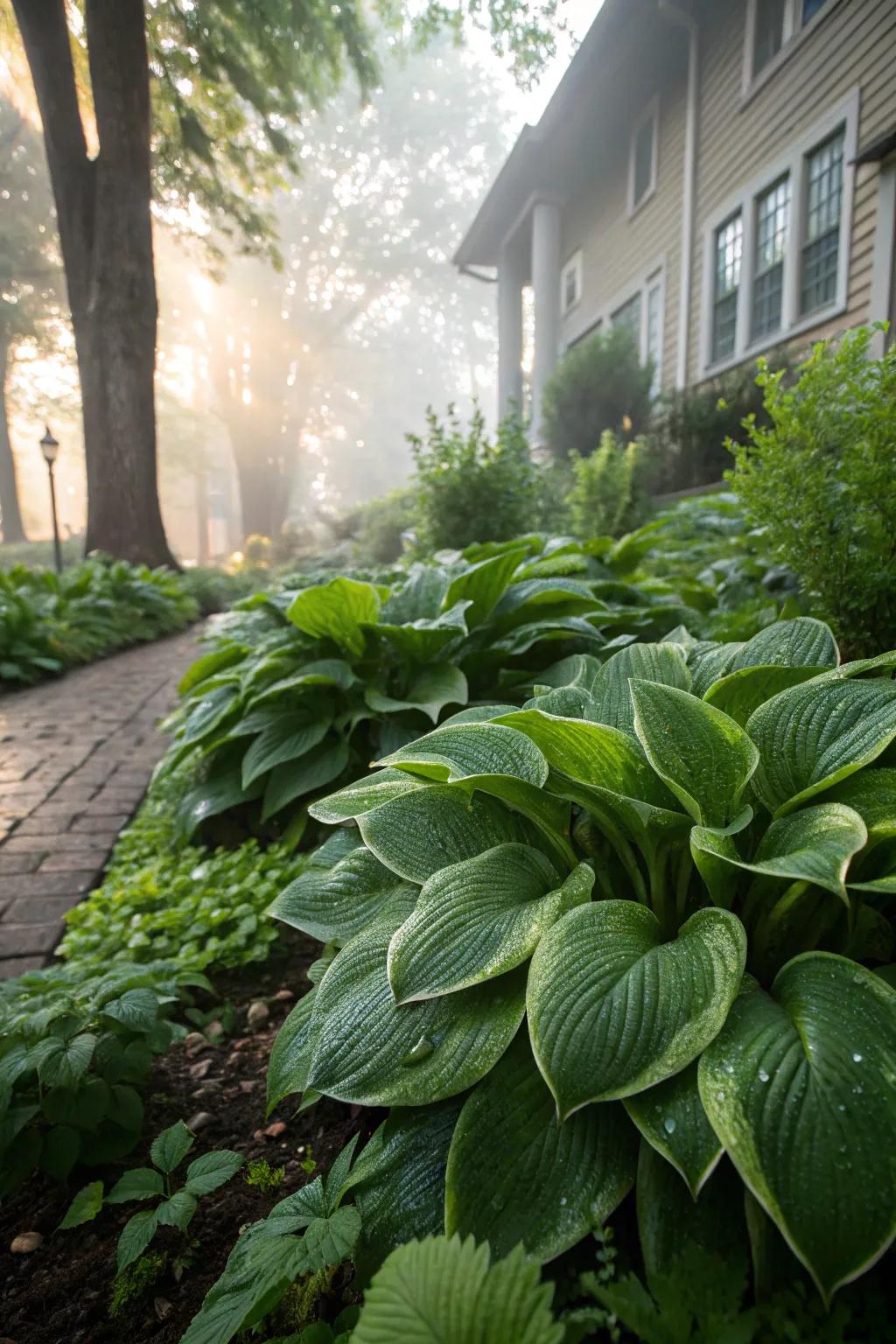
If you’re looking for a low-maintenance plant with lush foliage, hostas are your go-to. I adore how their broad, green leaves create a calming backdrop for brighter blooms.
A few things you might like:
- Hosta Plant Collection: Enhance your garden with vibrant, low-maintenance hostas for a stunning visual impact.
- Organic Fertilizer for Hostas: Boost your hostas’ growth with natural fertilizers for lush, healthy foliage.
- Mulch for Hosta Gardens: Retain moisture and enrich your soil using quality mulch for a thriving hosta garden.
2. Heuchera for Colorful Foliage

Heuchera, also known as coral bells, bring colorful foliage that can brighten up any shaded spot. They’re a staple in my garden for their versatility and vibrant leaf colors.
A few relevant products:
- Heuchera Plant Seeds: Enhance your garden’s charm with vibrant Heuchera seeds for stunning and versatile foliage.
- Gardening Trowel Set: Plant your Heuchera easily with this durable and ergonomic gardening trowel set.
- Organic Fertilizer for Perennials: Boost your Heuchera’s growth with this effective organic fertilizer, perfect for perennial plants.
3. Astilbes for Elegant Plumes
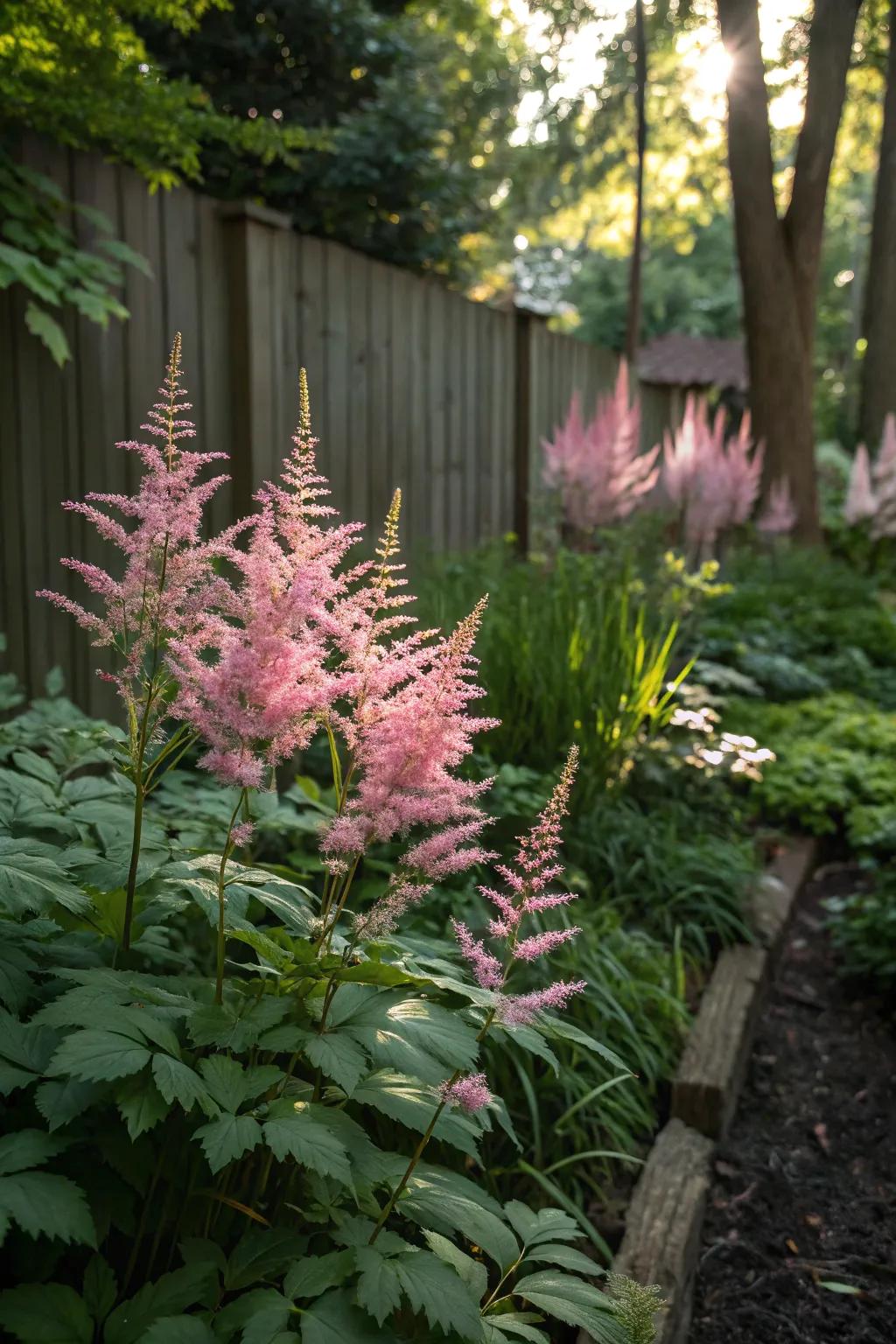
Astilbes are ideal for adding a touch of elegance with their feathery plumes. In my garden, they add a soft texture that dances beautifully in the morning breeze.
Items that may come in handy:
- Astilbe Plant Starter Kit: Enhance your garden with this Astilbe starter kit, perfect for a touch of elegance.
- Shade-Tolerant Garden Fertilizer: Boost your Astilbes’ growth with this fertilizer, ideal for shade-tolerant plants.
- Decorative Garden Mulch: Preserve moisture and add a stylish layer to your garden with decorative mulch.
4. Hydrangeas for a Splash of Color

Hydrangeas are a stunning choice for the east side of the house, with their ability to thrive in partial shade. In my own garden, their vibrant blooms are the first to catch the morning light, creating a delightful entrance to the day.
Check these products out:
- Hydrangea Plant Fertilizer: Boost your hydrangeas’ color and growth with this effective fertilizer. Perfect for vibrant blooms.
- Garden Pruning Shears: Keep your hydrangeas neatly trimmed and healthy with these durable pruning shears.
- Soil pH Test Kit for Gardens: Ensure optimal soil conditions for your hydrangeas by testing pH levels easily at home.
5. Japanese Forest Grass for a Graceful Touch
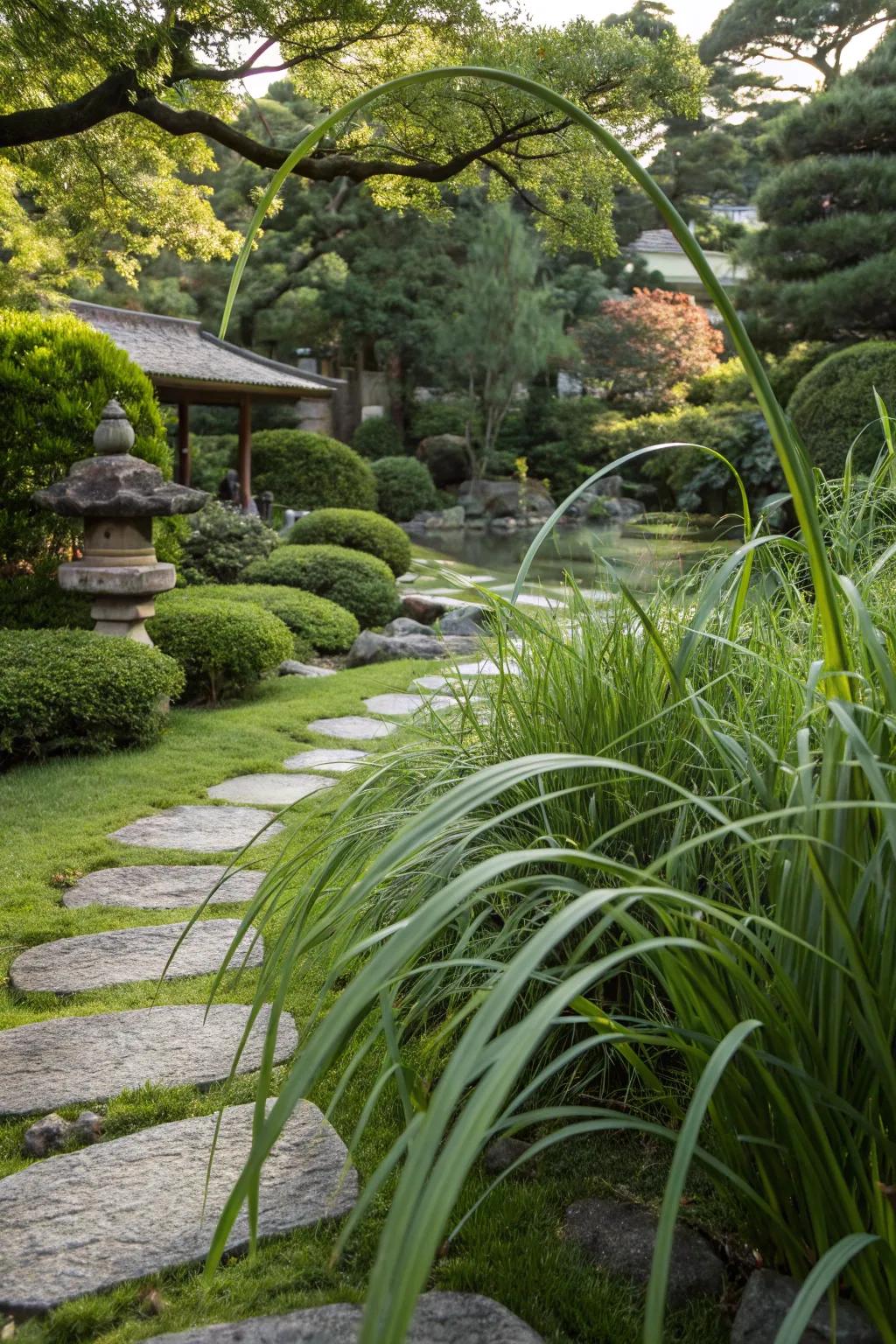
Japanese forest grass adds a graceful touch with its arching blades and soft texture. I love using it to add movement and elegance to my shaded borders.
Possibly handy products:
- Decorative Garden Stepping Stones: Enhance your garden path with these elegant stepping stones, adding style and functionality.
- Outdoor Garden Lantern: Illuminate your garden with this charming lantern, perfect for creating a serene ambiance.
- Japanese Forest Grass Seeds: Plant these seeds to cultivate lush, graceful Japanese forest grass in your garden.
6. Variegated Jacob’s Ladder for Subtle Beauty
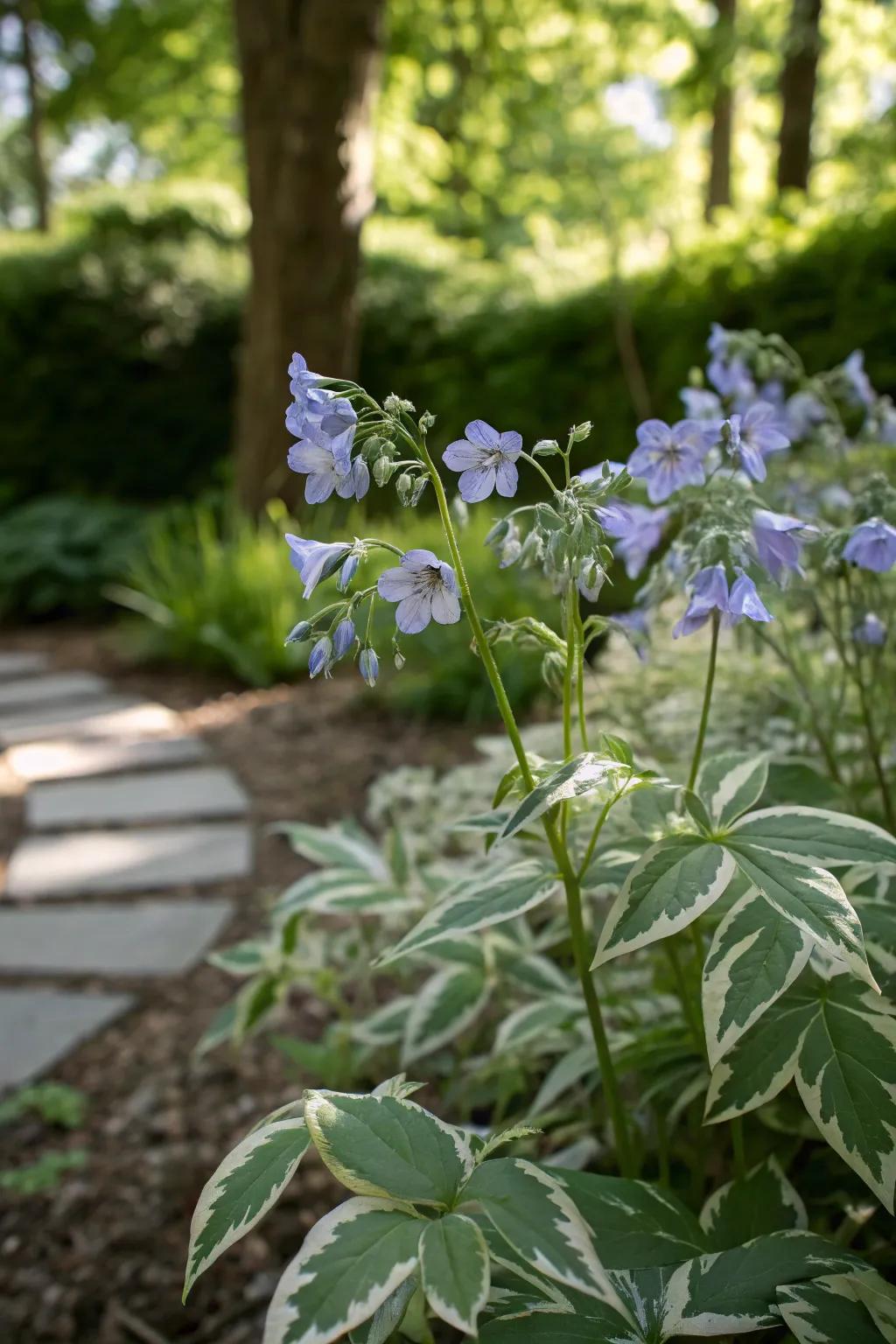
Variegated Jacob’s Ladder offers subtle beauty with its delicate foliage and violet blue flowers. It’s one of those plants that quietly elevates the garden without shouting for attention.
Give these a look:
- Variegated Jacob’s Ladder Seeds: Elevate your garden with these seeds, offering delicate blooms for a serene atmosphere.
- Decorative Garden Edging: Enhance garden paths with elegant edging that complements subtle foliage and brightens outdoor spaces.
- Natural Mulch for Gardens: Preserve moisture and improve soil health with natural mulch, perfect for all your garden beds.
7. Japanese Maple for Dramatic Foliage
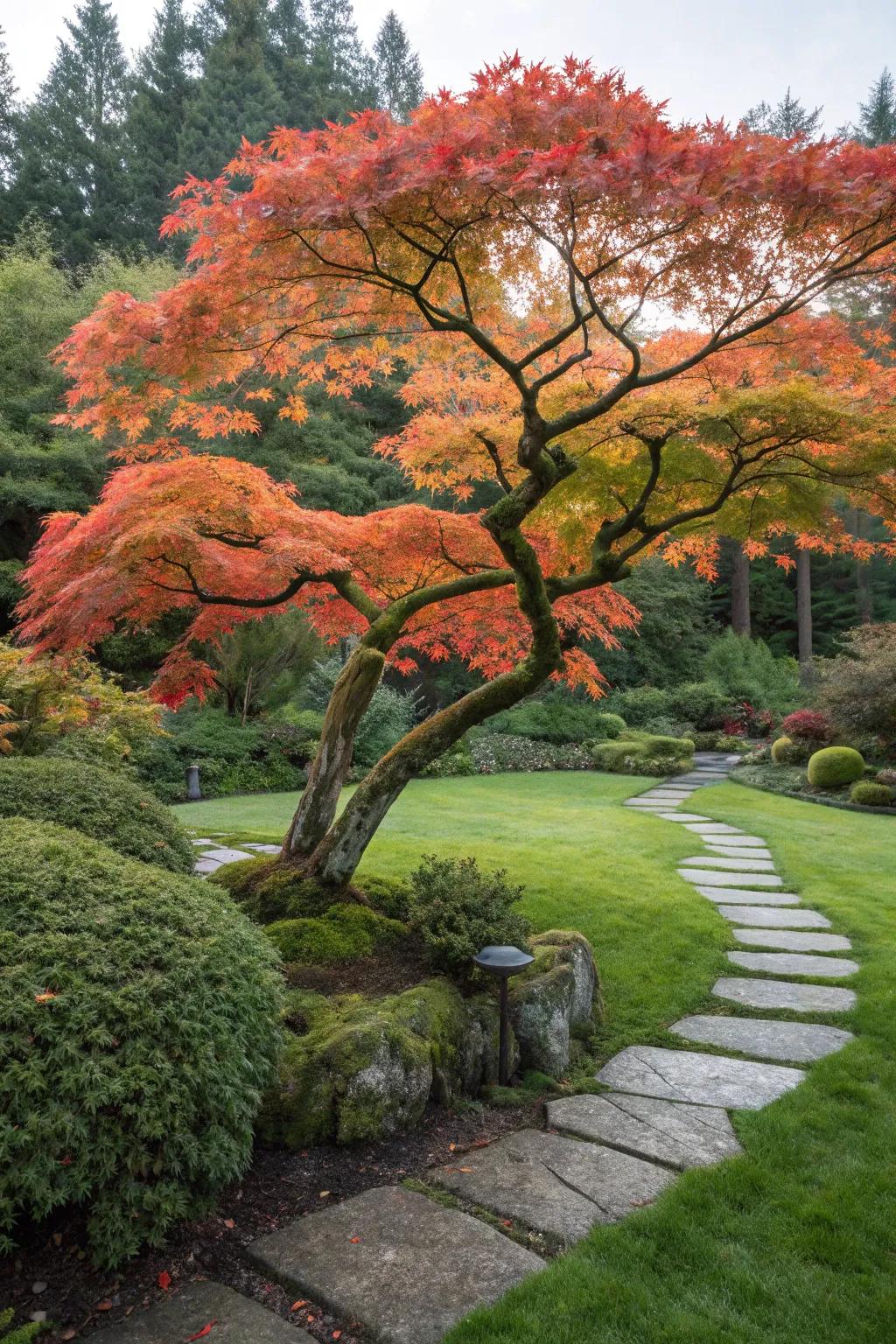
A Japanese maple can add dramatic foliage with its stunning leaf shapes and colors. It’s a focal point in my garden that never fails to impress visitors.
A few suggestions:
- Japanese Maple Seeds Pack: Grow your own Japanese maple and enjoy its stunning, colorful foliage in your garden.
- Organic Maple Fertilizer: Ensure lush growth and vibrant leaves with this specially formulated maple tree fertilizer.
- Decorative Mulch for Trees: Enhance your garden’s appearance and soil quality using decorative mulch around your maple tree.
8. Bleeding Hearts for a Romantic Touch
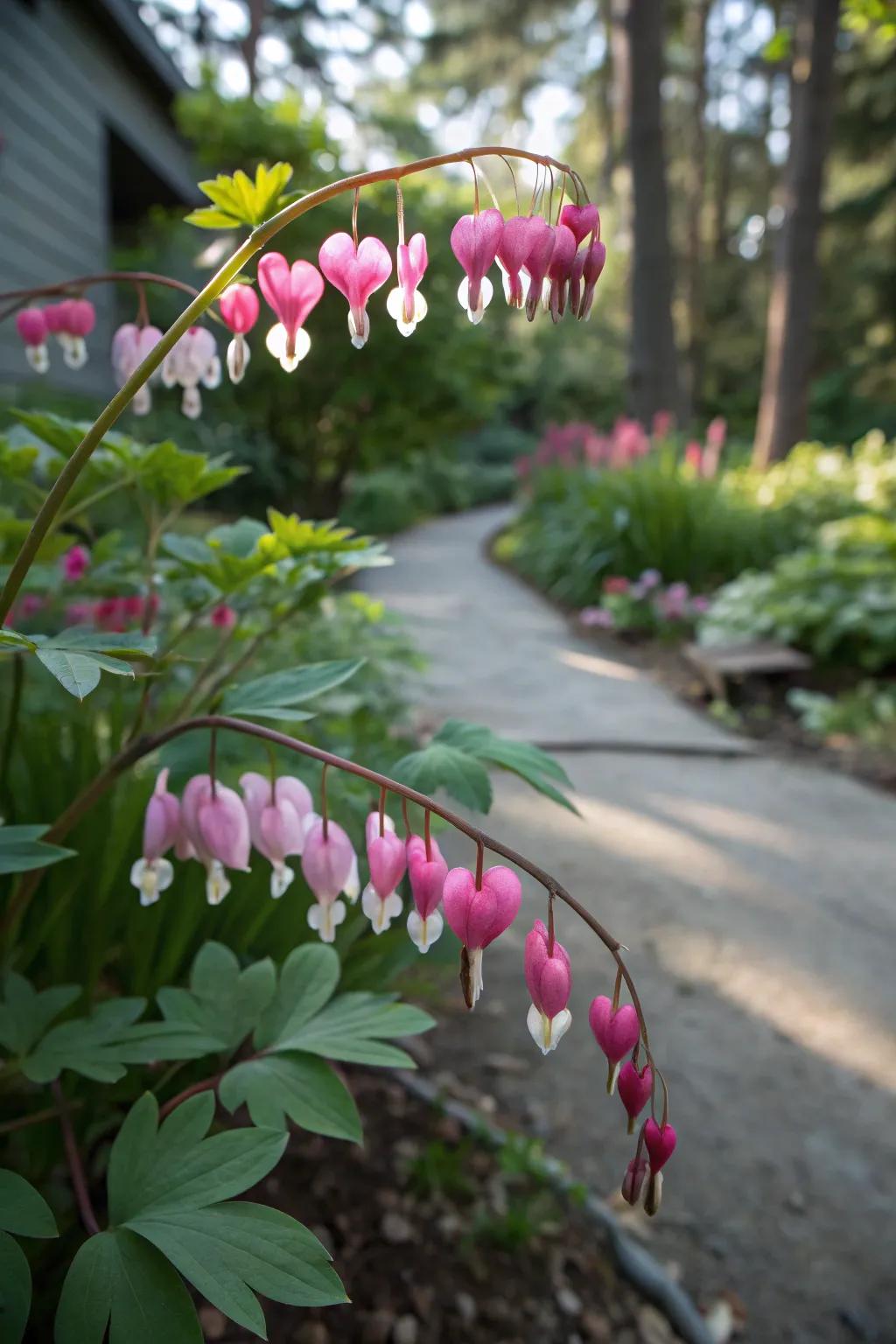
Bleeding hearts are perfect for adding a romantic touch with their heart-shaped flowers. Every spring, they surprise me with their delicate pink and white blooms.
Consider these options:
- Perennial Bleeding Heart Seeds: Grow your own romantic garden with these perennial bleeding heart seeds today.
- Shade Garden Fertilizer: Enhance your garden’s blooms with this specially formulated shade garden fertilizer.
- Decorative Garden Borders: Create charming pathways with these easy-to-install decorative garden borders.
9. Liriope for Evergreen Ground Cover
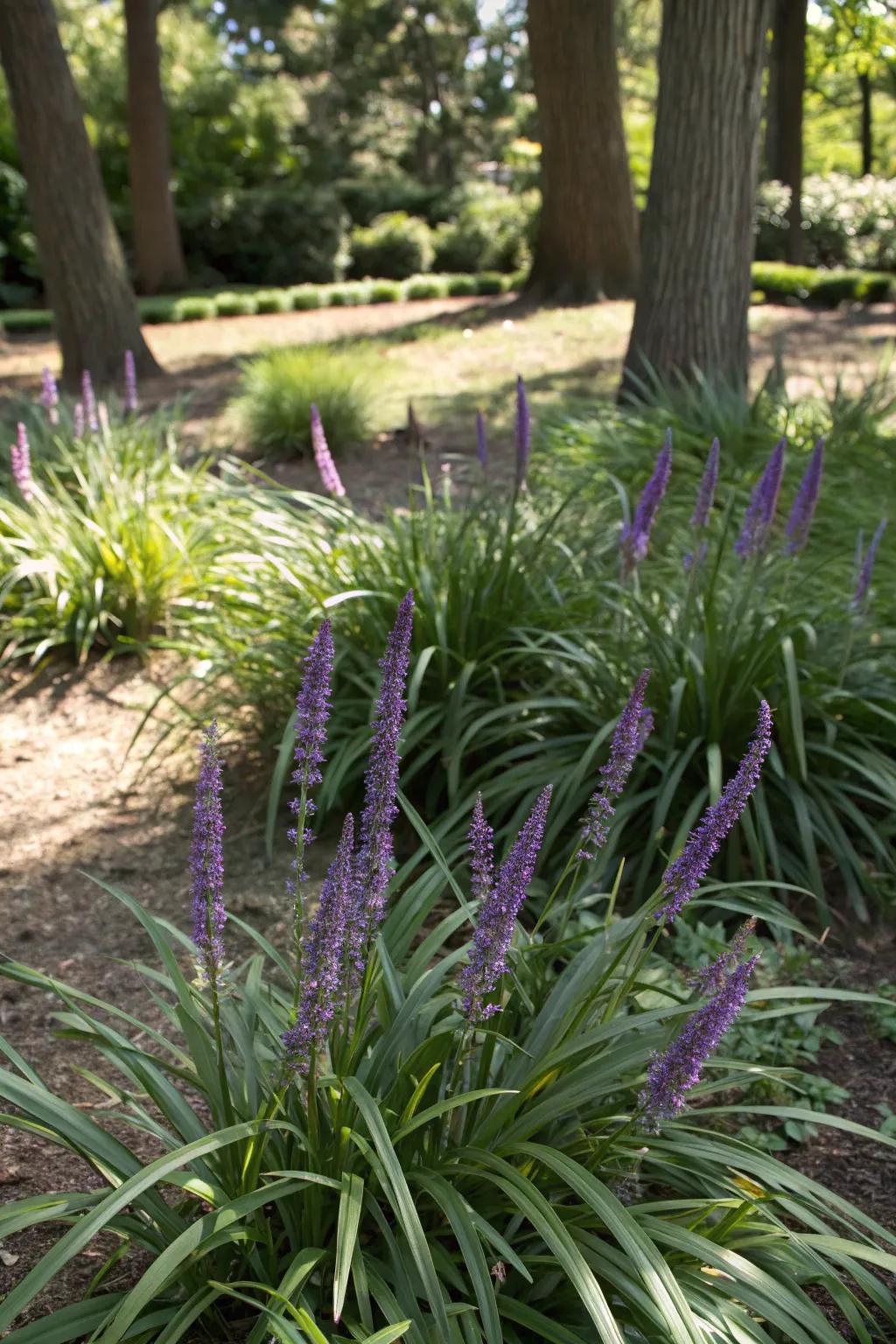
Liriope provides an evergreen ground cover with its grass-like leaves and purple flower spikes. In my garden, it’s a reliable performer that looks great year-round.
Useful items to consider:
- Liriope Live Plants: Enhance your garden with these lush, evergreen Liriope plants for year-round beauty.
- Organic Mulch: Protect your Liriope with organic mulch for healthier, more vibrant ground cover.
- Garden Fertilizer: Boost the growth of your Liriope with high-quality garden fertilizer.
10. Pulmonaria for Unique Leaf Patterns
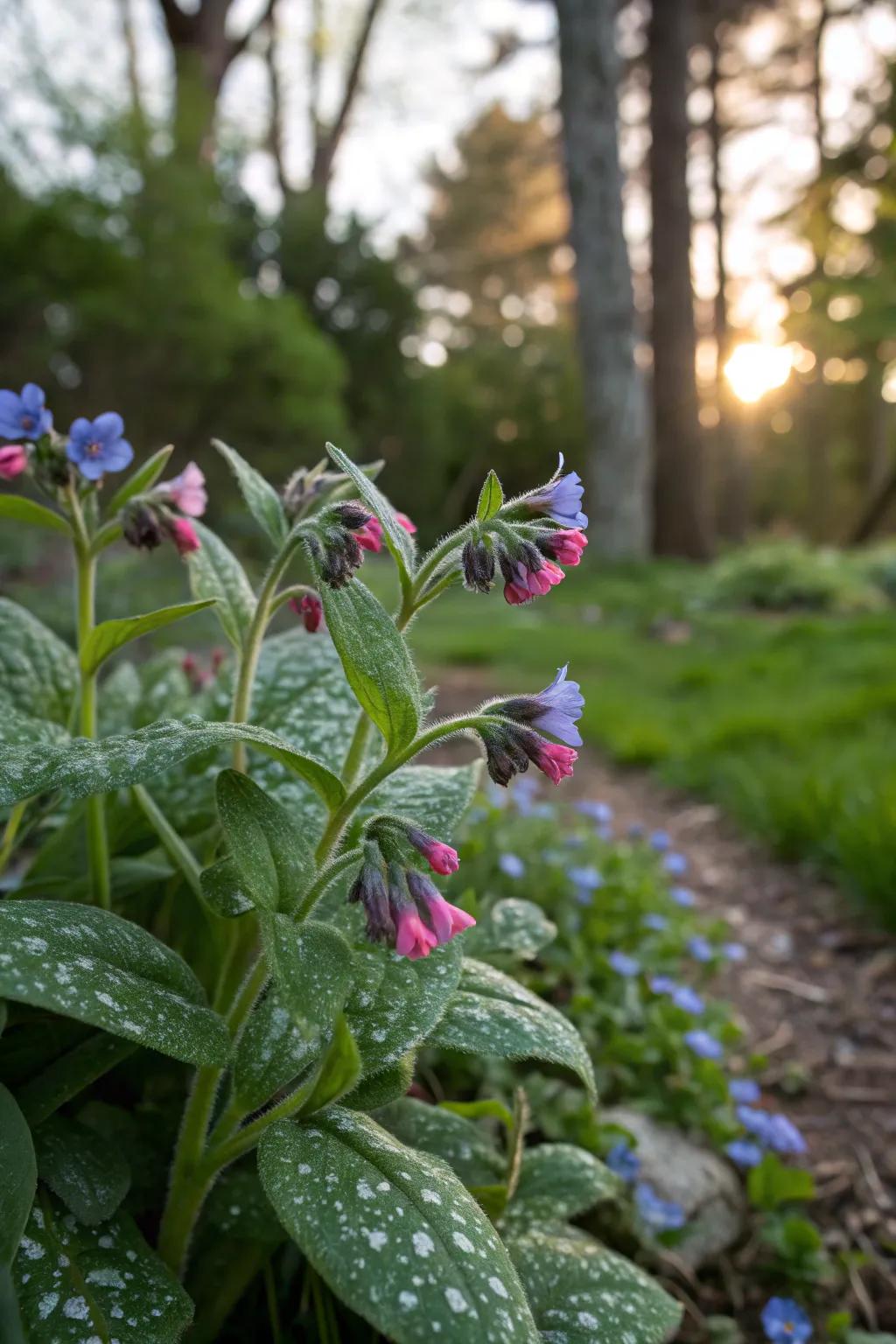
Pulmonaria, or lungwort, offers unique leaf patterns and charming flowers that attract pollinators. Its spotted foliage and pink-to-blue blooms add character to any garden.
You might give these a try:
- Pulmonaria Seed Pack: Transform your garden with captivating Pulmonaria foliage and vibrant blooms. Perfect for shaded areas.
- Organic Plant Fertilizer: Boost your Pulmonaria plants’ growth with nutrient-rich organic fertilizer. Ideal for lush, healthy foliage.
- Shade Cloth for Plants: Protect your Pulmonaria from harsh sunlight with quality shade cloth. Ensure optimal growth conditions.
11. Lungwort for a Touch of Whimsy

Lungwort brings a touch of whimsy with its spotted leaves and lovely blue flowers. I find it a charming addition that adds a playful element to my garden.
A few helpful options:
- Lungwort Seeds: Grow your own whimsical garden with these easy-to-plant Lungwort seeds for lovely blooms.
- Decorative Plant Markers: Add style to your garden with these charming plant markers for easy identification.
- Moisture Control Potting Mix: Ensure your Lungwort thrives with this premium potting mix for optimal moisture control.
12. Fuchsia for a Burst of Color
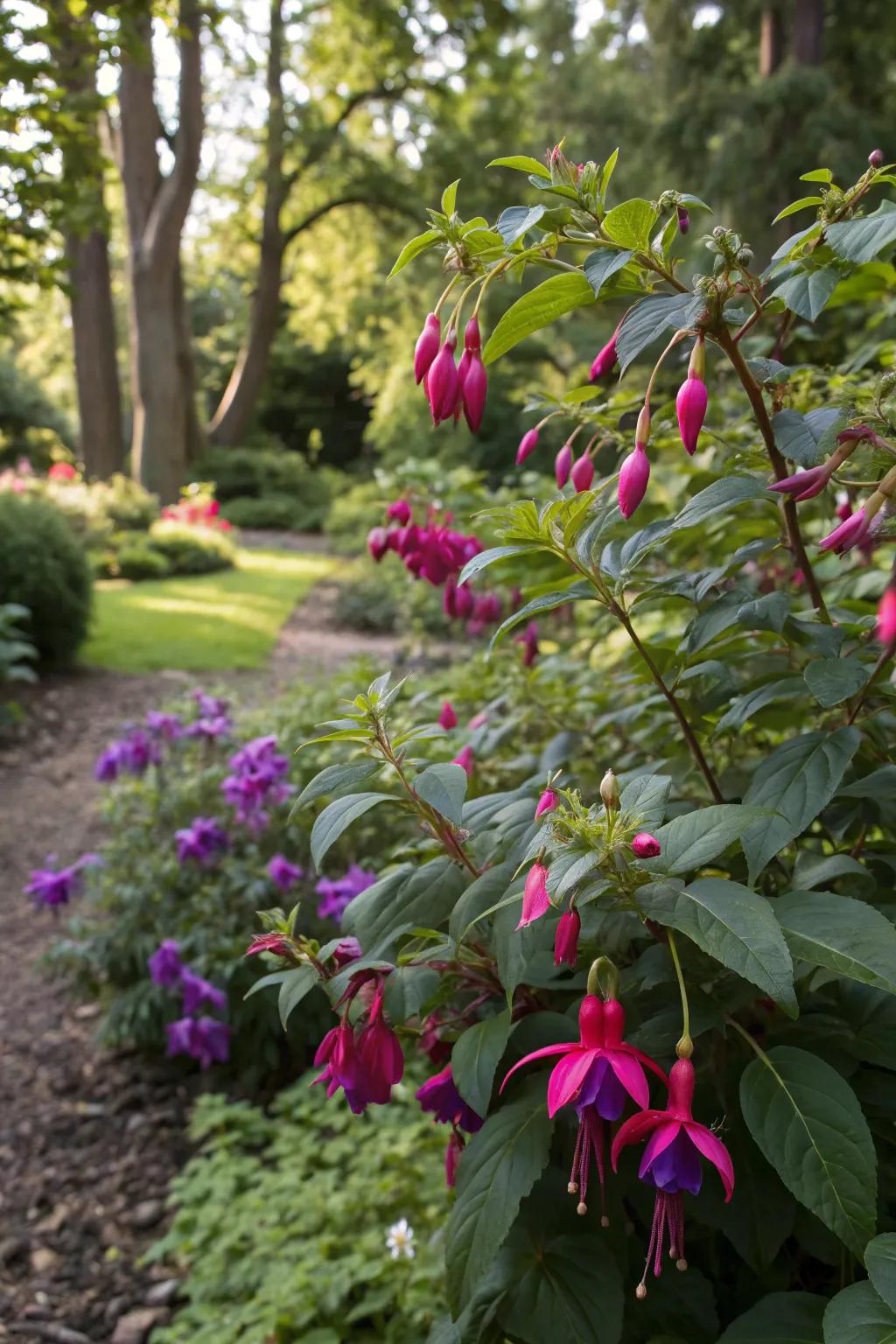
Fuchsias offer a burst of color with their striking flowers that seem to dance in the breeze. They’re a favorite in my garden for their lively presence.
Might be a good match:
- Fuchsia Plant Seeds: Grow your own vibrant fuchsia flowers for stunning, colorful blooms that dance in your garden.
- Garden Planters: Enhance your garden’s aesthetic with durable planters perfect for showcasing your fuchsia plants.
- Organic Plant Fertilizer: Boost your fuchsia’s growth with this premium fertilizer, perfect for healthy and colorful blooms.
13. Pieris for Year-Round Interest
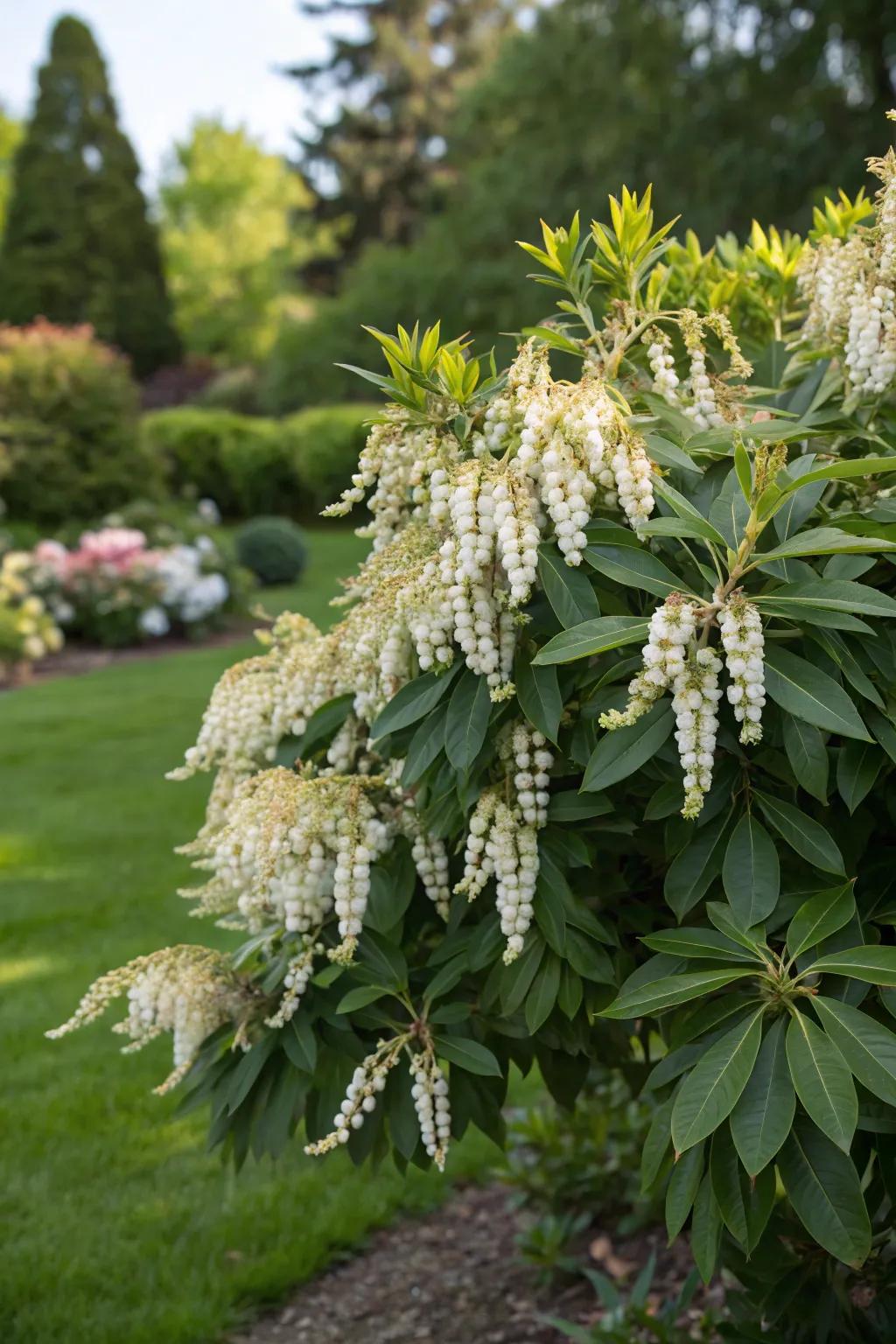
Pieris offers year-round interest with its colorful new growth and cascading clusters of flowers. It’s a staple in my garden for its ever-changing beauty.
A few choices to try:
- Garden Fertilizer for Acid-Loving Plants: Boost your Pieris shrubs with nutrient-rich fertilizer for vibrant growth and blooming flowers.
- Mulch for Moisture Retention: Enhance soil health and retain moisture around your Pieris with quality garden mulch.
- Pruning Shears for Garden Bushes: Maintain the shape and health of your Pieris with precise, high-quality pruning shears.
14. Ferns for Year-Round Interest
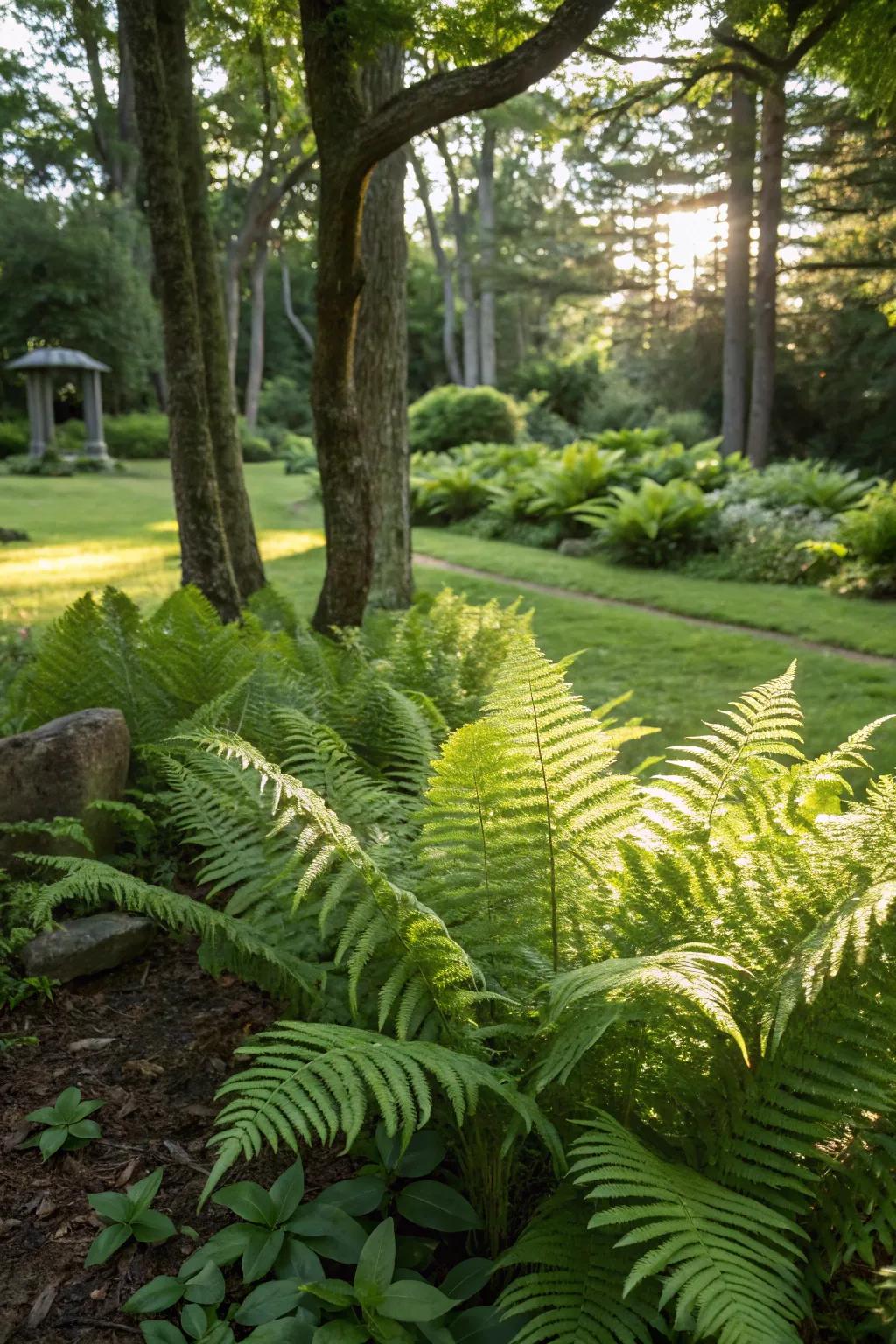
Ferns thrive in the cool, moist conditions of an east-facing garden, offering year-round interest. I love their intricate leaves that add a lush, forest-like feel to any space.
These products might help:
- Outdoor Fern Plant Kit: Enhance your garden with lush, vibrant ferns that thrive in shaded areas effortlessly.
- Moisture Control Potting Mix: Ensure optimal fern growth with this moisture-control potting mix, perfect for shaded gardens.
- Decorative Garden Stepping Stones: Create a charming garden pathway with elegant stepping stones, complementing a fern-rich landscape.
15. Rhododendrons for Bold Blooms
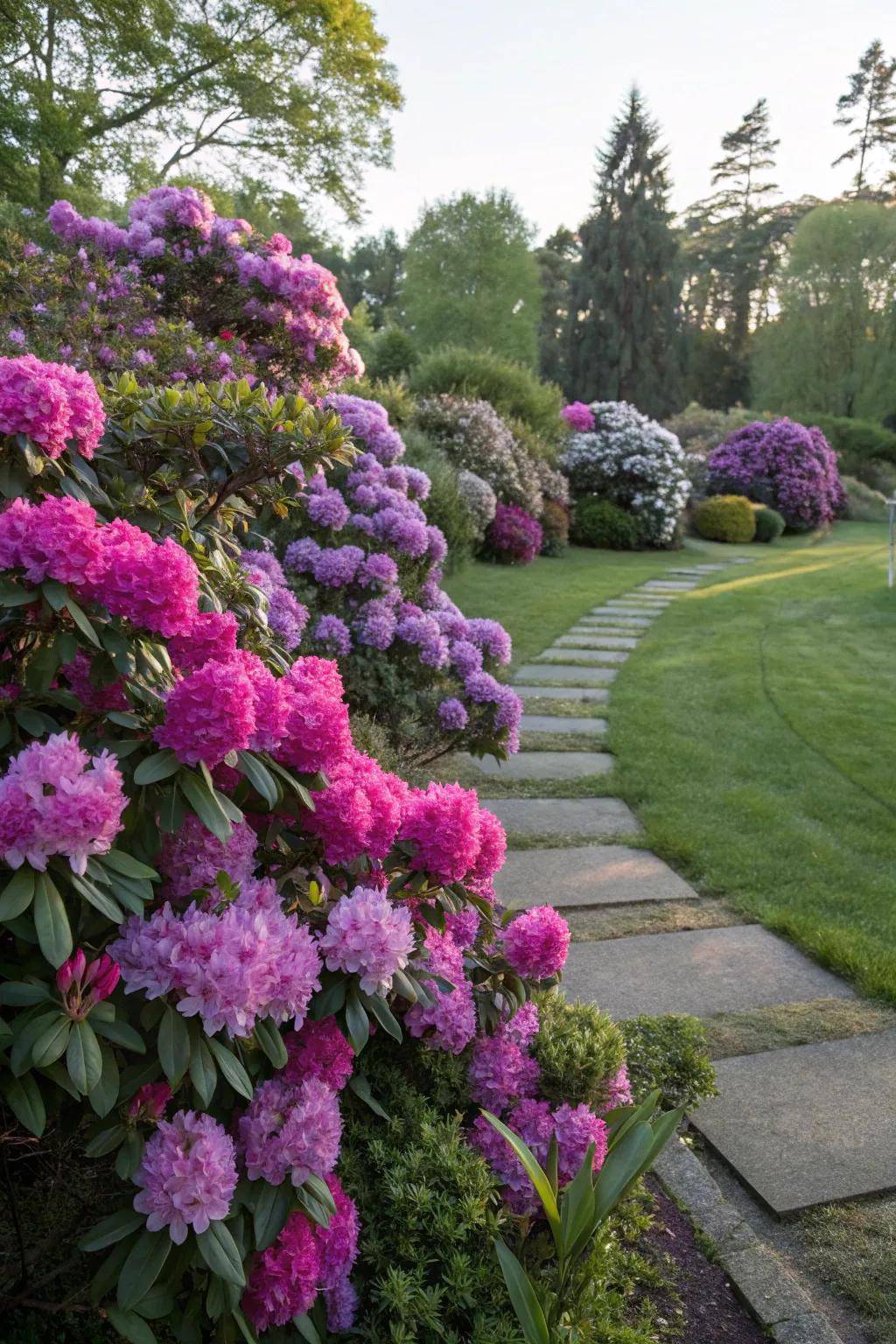
Rhododendrons are renowned for their bold blooms and are perfect for adding a splash of color to the east side of your house. Their vibrant flowers are a showstopper in my garden each spring.
Possibly helpful picks:
- Rhododendron Fertilizer: Enhance your rhododendrons’ growth and blooms with this specially formulated plant fertilizer.
- Pruning Shears for Shrubs: Keep your rhododendrons neat and healthy by using these durable pruning shears regularly.
- Decorative Mulch for Flower Beds: Preserve moisture and enrich soil with this beautiful, natural-looking decorative mulch.
16. Brunnera for Unique Textures

Brunnera’s heart-shaped leaves with silver overlays create unique textures. Their delicate blue flowers in spring are an added bonus that I always look forward to.
Some handy options:
- Seed Pack for Brunnera: Grow your own Brunnera for stunning textures and delicate blue flowers in your garden.
- Gardening Gloves: Protect your hands with durable gloves while planting beautiful Brunnera in your garden.
- Garden Soil Mix: Ensure healthy growth for your Brunnera with nutrient-rich soil tailored for optimal plant health.
17. Coral Bells for Versatile Ground Cover
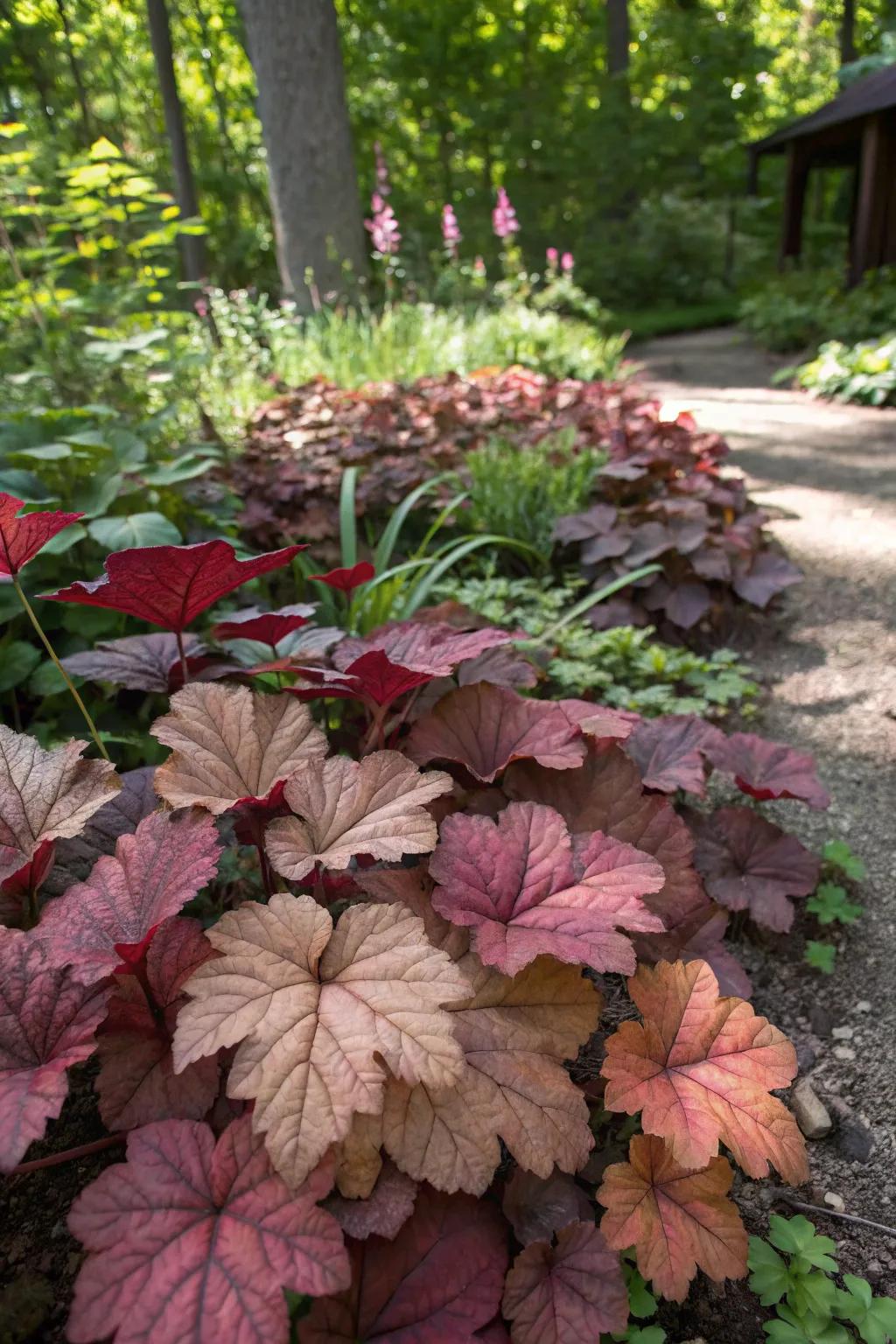
Coral bells are excellent for ground cover with their dense clusters of foliage. I enjoy mixing different varieties to create a mosaic of colors in the shaded parts of my garden.
Products that could assist:
- Variety Pack of Coral Bells Seeds: Transform your garden with a vibrant mosaic of coral bells, perfect for shaded areas.
- Organic Garden Soil for Shade Plants: Enhance soil nutrition for your coral bells with this organic garden soil blend.
- Biodegradable Garden Mulch: Use this eco-friendly mulch to maintain moisture and support your coral bell ground cover.
18. Bluebells for Spring Magic
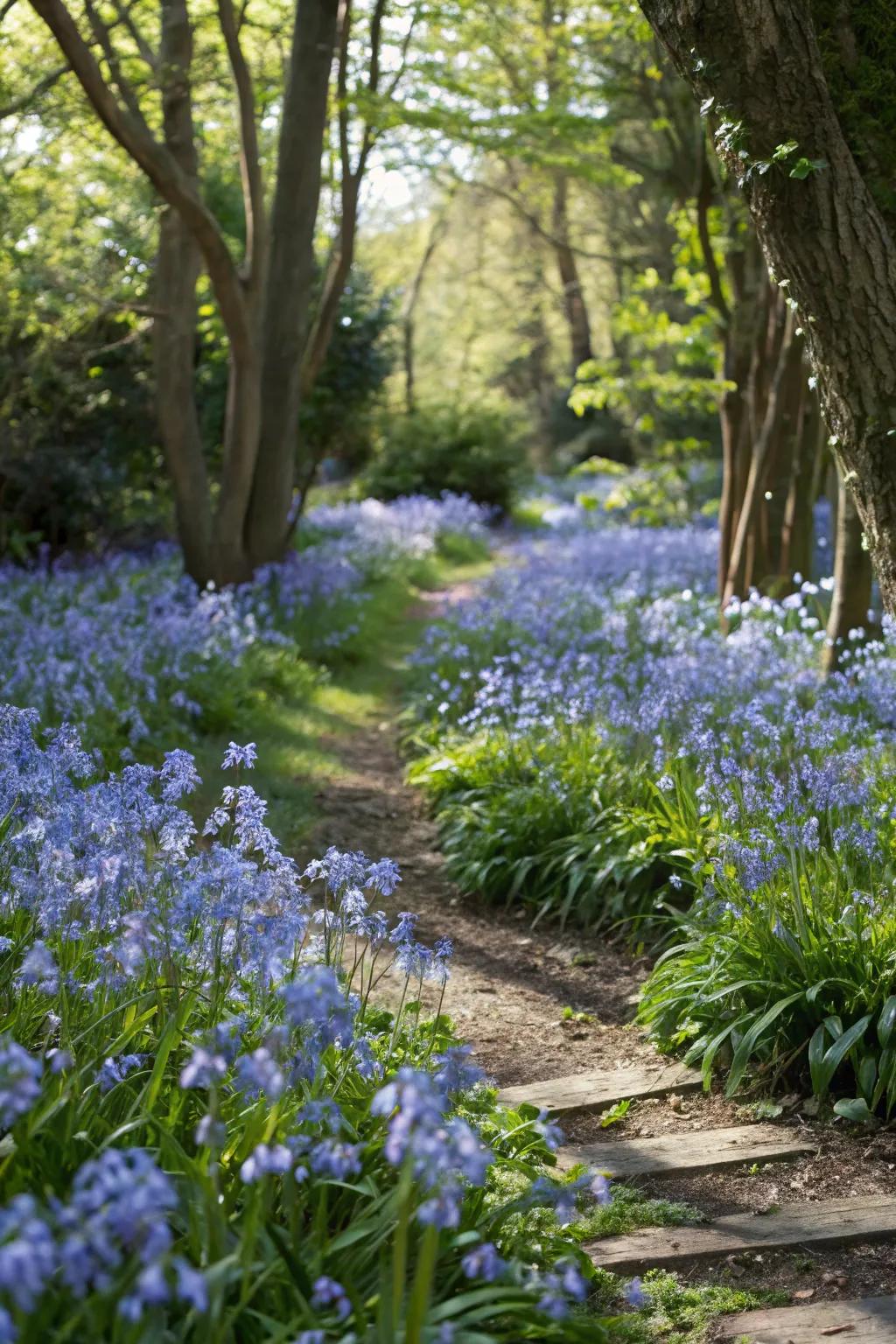
Bluebells bring a touch of spring magic with their bell-shaped flowers that carpet the ground. They create a fairy-tale ambiance that’s enchanting and timeless.
You might like:
- Bluebell Flower Bulbs: Transform your garden with these easy-to-plant bluebell bulbs, perfect for a spring landscape.
- Organic Plant Fertilizer: Boost your bluebells’ growth with natural fertilizer, ensuring vibrant blooms every spring.
- Garden Path Lighting: Enhance your garden’s magical ambiance with soft, solar-powered path lighting this spring.
19. Clematis for Vertical Interest
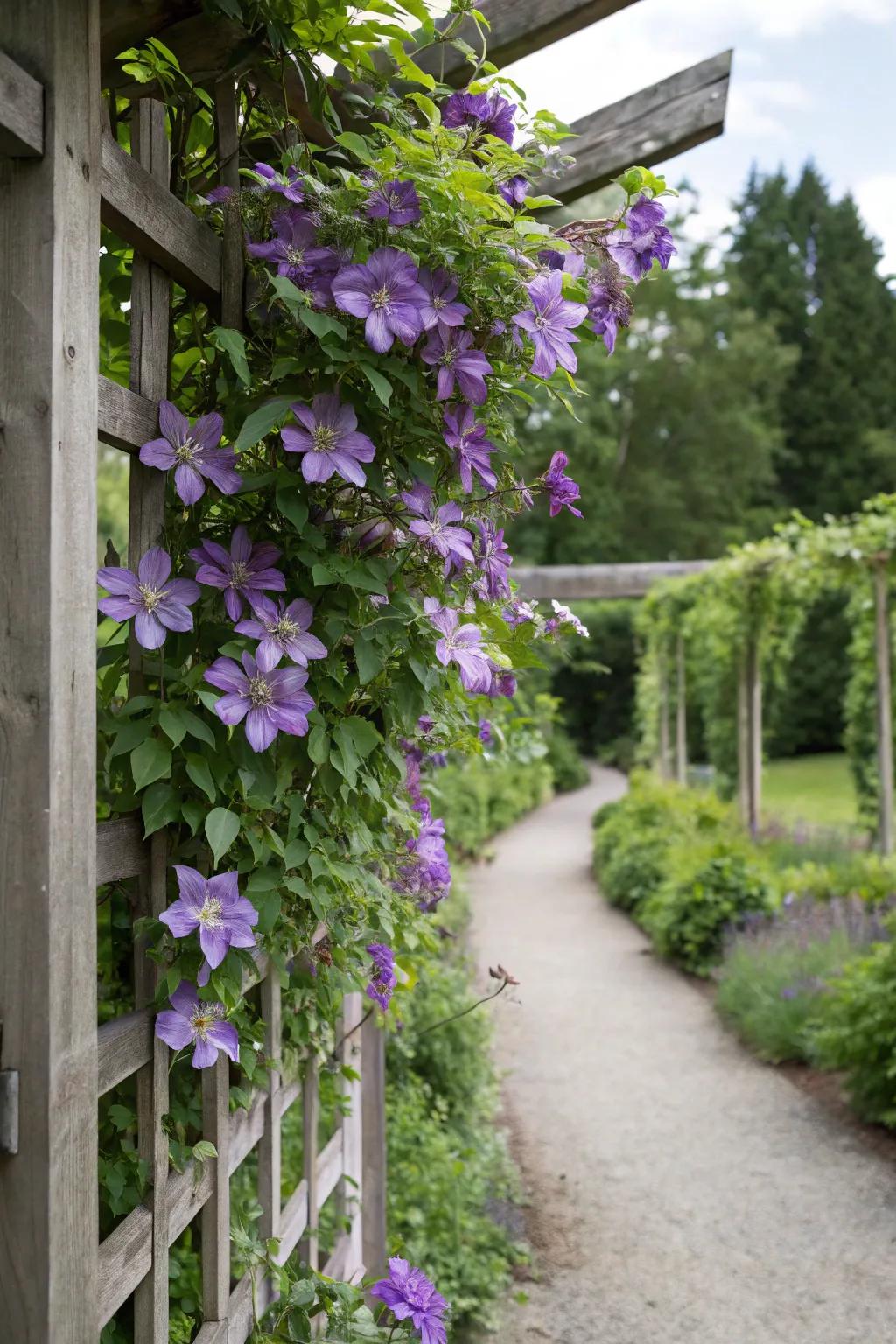
Clematis is perfect for adding vertical interest with its climbing habit and beautiful flowers. Trained up a trellis, it creates a living wall that’s both stunning and space-saving.
Maybe worth checking out:
- Wooden Garden Trellis: Enhance your vertical garden with a sturdy wooden trellis perfect for clematis support.
- Clematis Climbing Plant Seeds: Start your vertical garden project with these beautiful clematis seeds for vibrant blooms.
- Plant Ties for Climbing Plants: Secure your clematis easily with flexible plant ties, ensuring healthy and supported growth.
20. Snowdrops for Early Bloomers
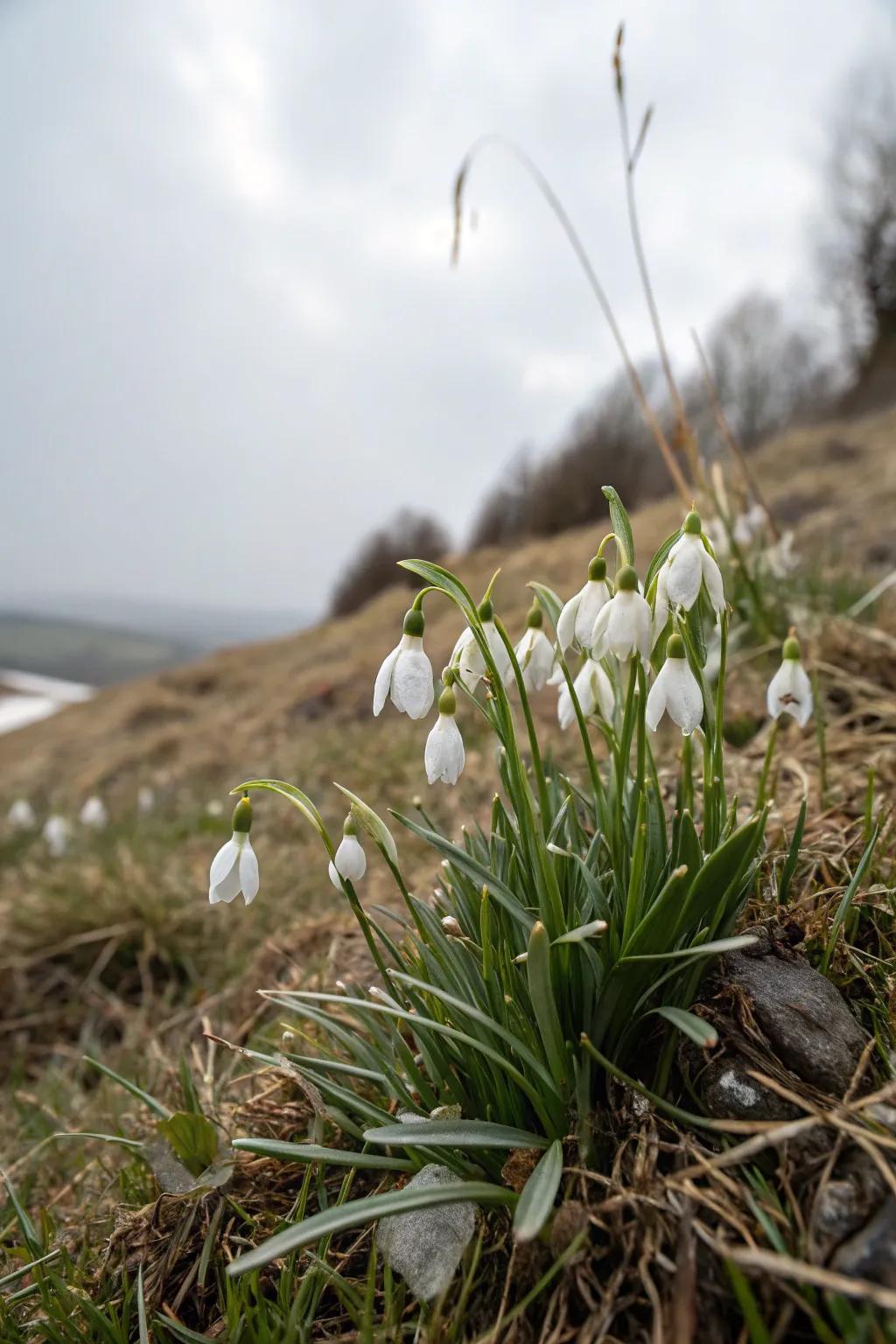
Snowdrops are among the first to bloom, bringing early spring cheer with their delicate white flowers. They never fail to lift my spirits after a long winter.
May just do the trick:
- Snowdrop Bulbs Pack: Plant these snowdrop bulbs to welcome spring’s first blooms and brighten your garden early.
- Gardening Hand Trowel: Use this ergonomic hand trowel for easy planting of snowdrops in your garden beds.
- Garden Kneeler and Seat: Comfortably plant your snowdrops with this foldable garden kneeler and seat.
21. Anemones for Bright Pops of Color
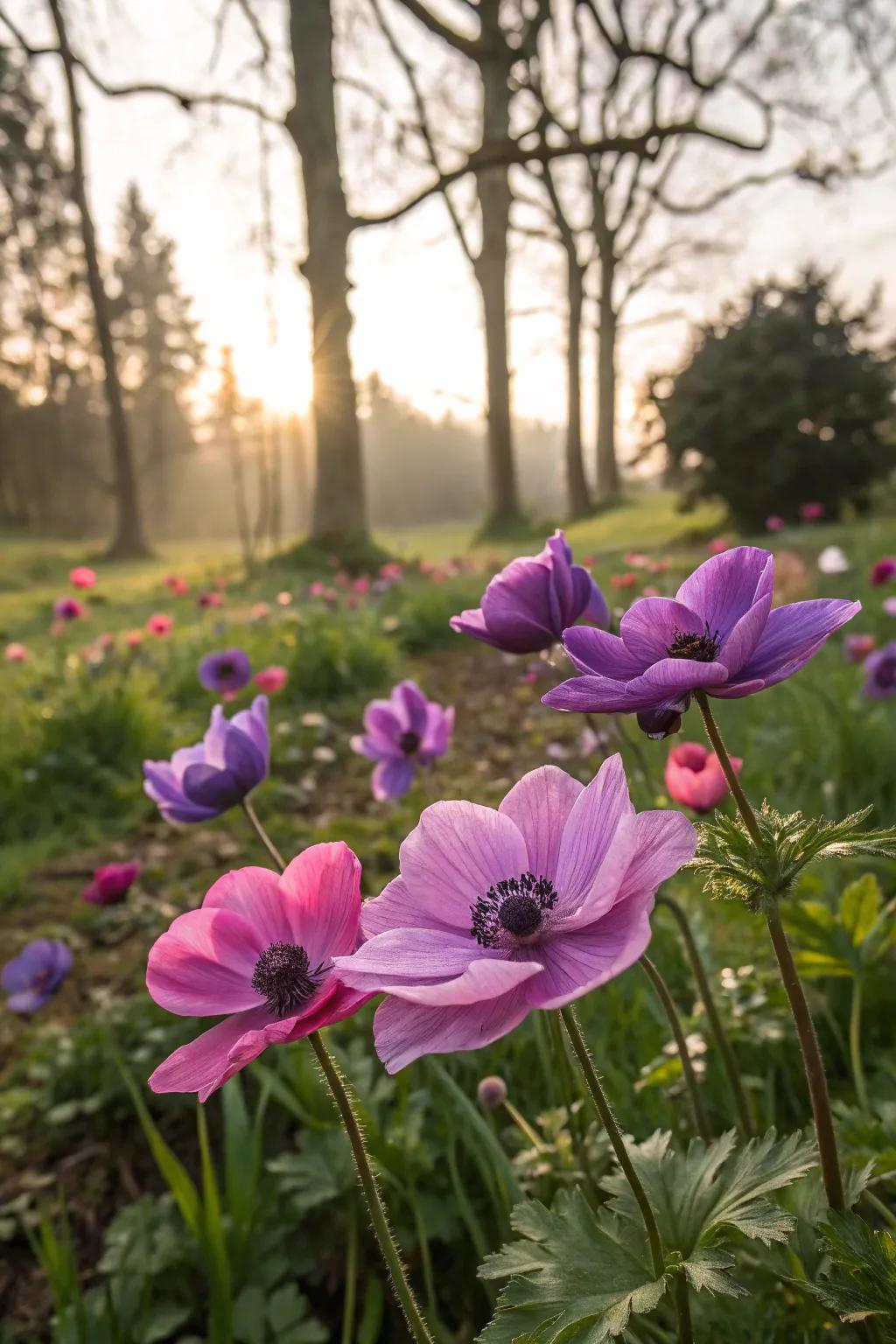
Anemones thrive in partial shade, offering bright pops of color with their cheerful blooms. They’re a fantastic way to add some excitement to the east side of your home.
Some ideas to consider:
- Anemone Flower Seeds: Brighten your garden with these colorful anemone seeds, perfect for partial shade flowerbeds.
- Organic Planting Soil for Anemones: Ensure your anemones thrive with nutrient-rich soil specifically designed for flowering plants.
- Garden Planting Shovel Set: Easily plant your anemones with this durable and ergonomic garden shovel set.

